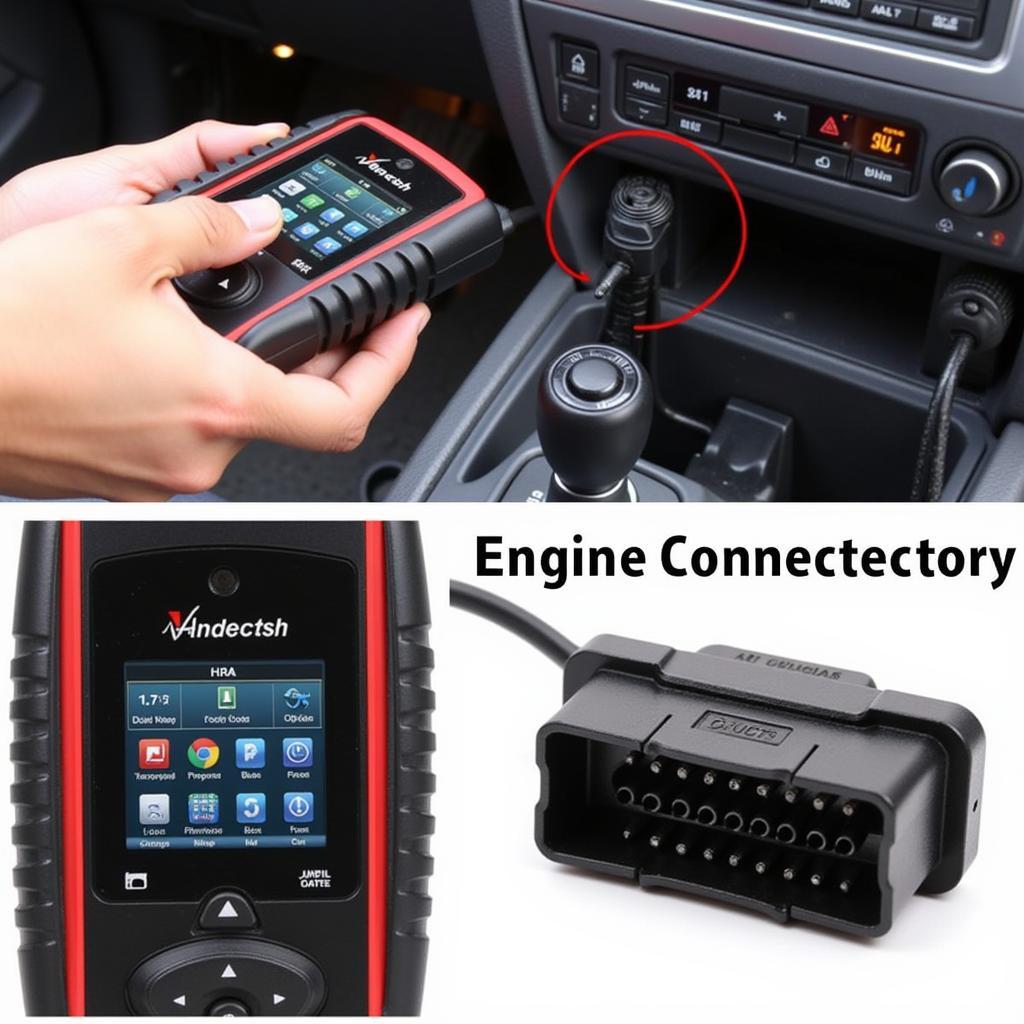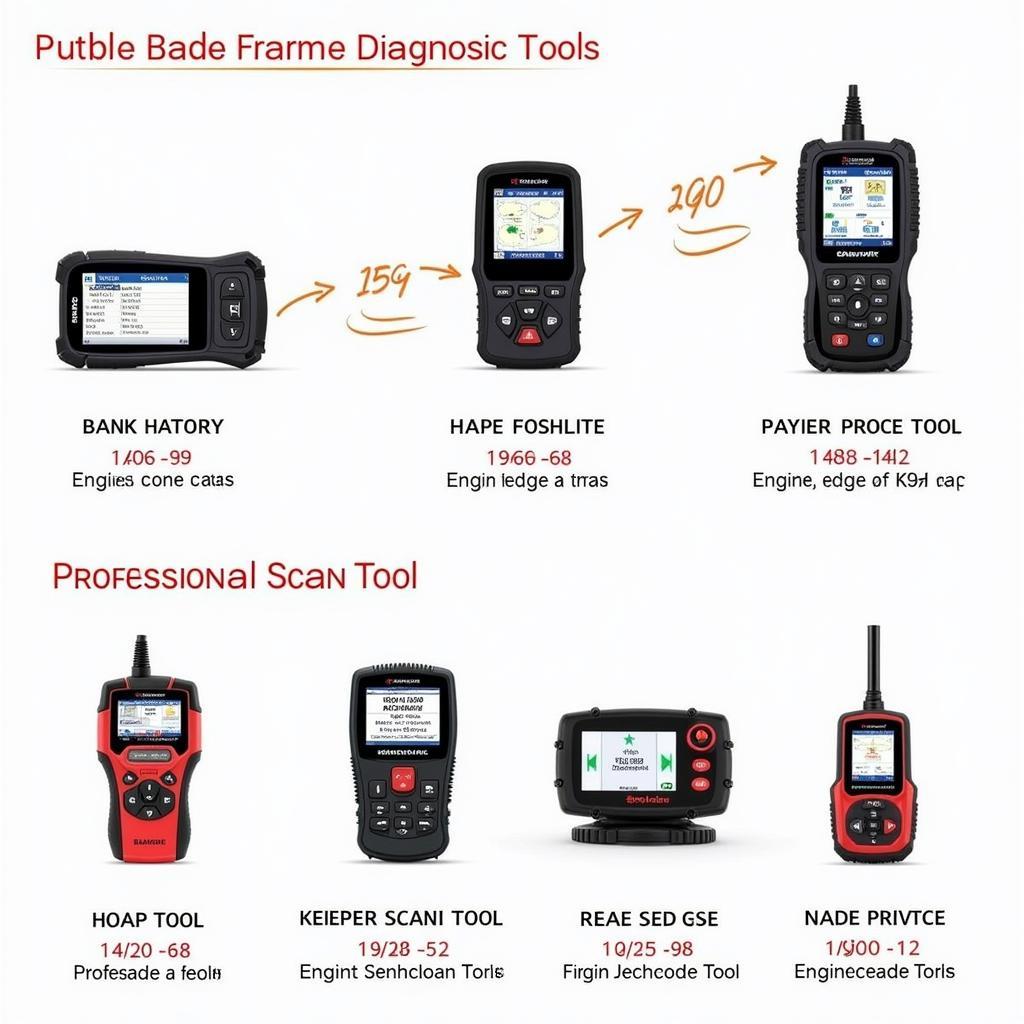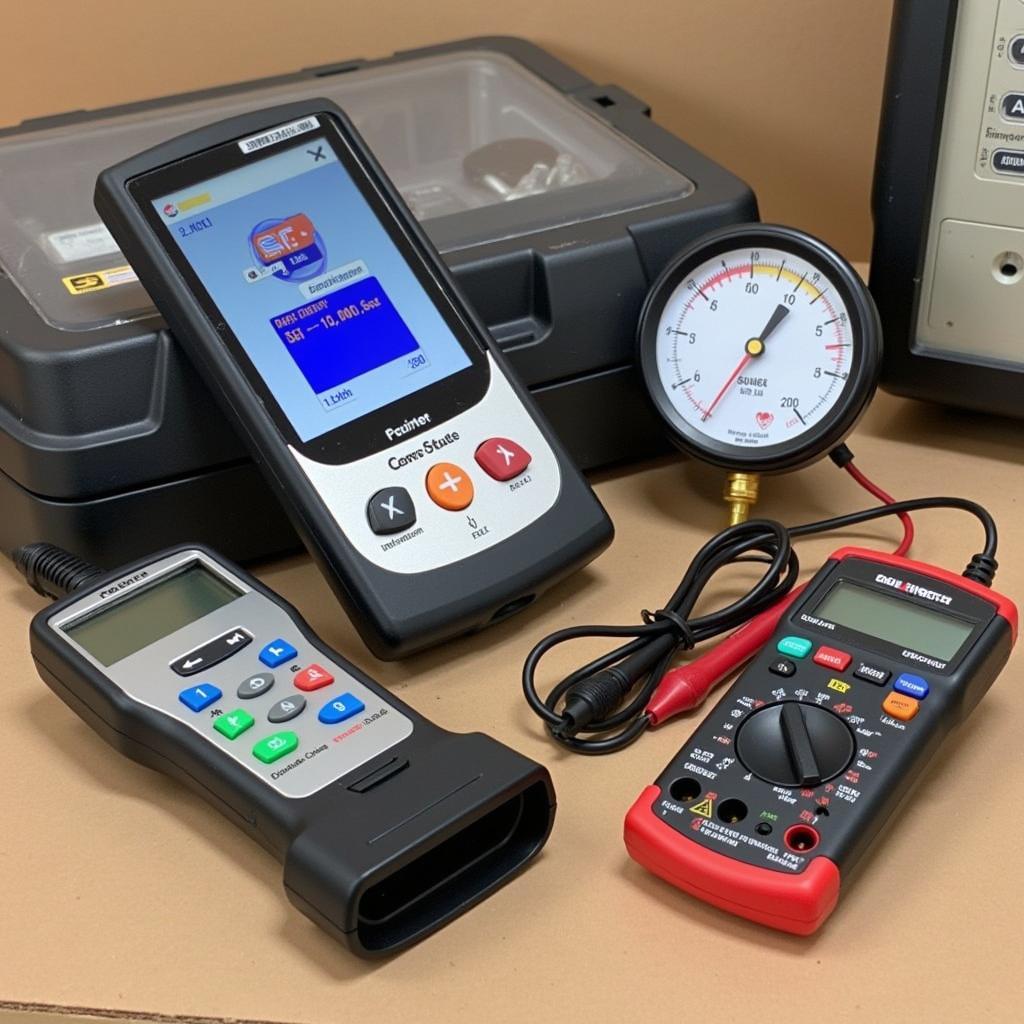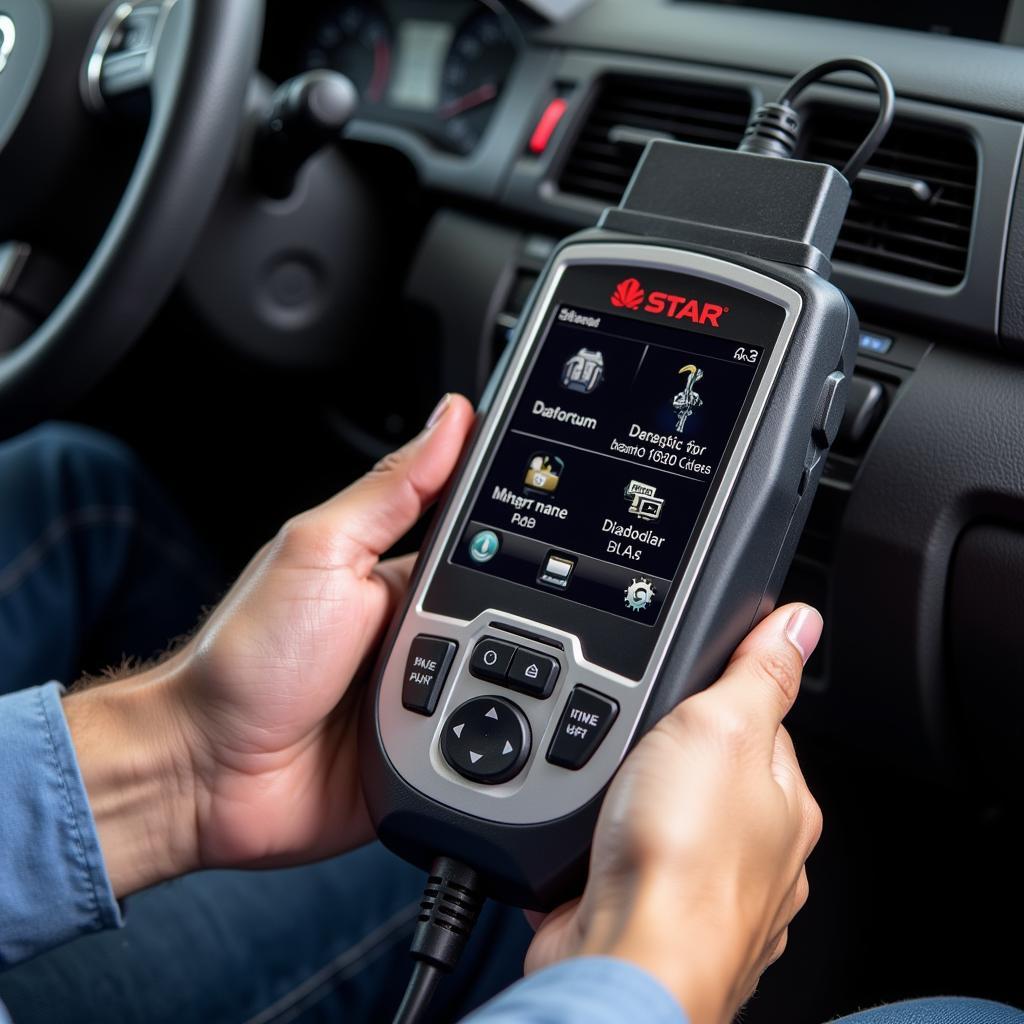Engine Code Diagnostic Tools are essential for anyone working with modern vehicles. Whether you’re a seasoned mechanic, a DIY enthusiast, or a shop owner, understanding how to use these tools can save you time, money, and frustration. This guide delves into the world of engine code readers, offering practical advice and insights to help you diagnose and resolve car troubles effectively.
After identifying a potential issue, the next step is to use an engine code diagnostic tool. Connecting the tool to your car’s OBD-II port allows you to retrieve diagnostic trouble codes (DTCs) that pinpoint the source of the problem. This empowers you to make informed decisions about repairs, preventing unnecessary replacements and saving you valuable resources. For Toyota owners, a dedicated toyota diagnostic scanner tool reader code engine abs srs airbag can be a great investment.
Understanding Engine Code Diagnostic Tools
Engine code diagnostic tools, also known as OBD-II scanners, are electronic devices that communicate with your car’s computer. They retrieve diagnostic trouble codes (DTCs), which are standardized codes that indicate specific malfunctions within the vehicle’s systems. These tools range from basic code readers to advanced professional-grade scan tools offering extensive functionalities like live data streaming, bi-directional control, and special functions.
 Mechanic Connecting Engine Code Reader to OBD2 Port
Mechanic Connecting Engine Code Reader to OBD2 Port
How to Use an Engine Code Diagnostic Tool
Using an engine code diagnostic tool is generally straightforward. First, locate your vehicle’s OBD-II port. Next, plug the diagnostic tool into the port. Turn the ignition key to the “on” position without starting the engine. The tool will power on and begin communicating with the vehicle’s computer. Follow the on-screen prompts to read the DTCs. Once retrieved, these codes can be looked up to identify the corresponding problem.
What to Look for in an Engine Code Diagnostic Tool
When choosing an engine code diagnostic tool, consider features like code reading and clearing capabilities, live data streaming, compatibility with your vehicle’s make and model, user-friendliness, and software updatability. Some tools offer advanced features like ABS and airbag system diagnostics, while others focus solely on engine codes. Selecting the right tool depends on your specific needs and budget. You can find specific tools for different car manufacturers, like a car diagnostic tool kia.
 Mechanic Analyzing Engine Data with Diagnostic Tool
Mechanic Analyzing Engine Data with Diagnostic Tool
Types of Engine Code Diagnostic Tools
Several types of engine code diagnostic tools are available, catering to various needs and skill levels:
- Basic Code Readers: These affordable tools primarily retrieve and clear basic engine codes.
- Enhanced Code Readers: Offer additional features like live data viewing and some manufacturer-specific codes.
- Professional Scan Tools: Comprehensive tools used by professional mechanics, offering extensive functionalities like bi-directional control, special functions, and advanced diagnostics.
“Choosing the correct diagnostic tool is crucial for efficient troubleshooting. A basic code reader might suffice for a home mechanic, but a professional scan tool is essential for complex diagnoses,” says automotive expert, Michael Stevenson.
Troubleshooting Common Issues with Engine Code Diagnostic Tools
Sometimes, you might encounter issues with your diagnostic tool. Ensure proper connection to the OBD-II port. Check for blown fuses or damaged wiring. Try the tool on a different vehicle to rule out tool malfunction. Update the tool’s software to the latest version. If problems persist, consult the tool’s user manual or contact the manufacturer for support. For specific ECU issues, you might consider a bosch ecu diagnostic tool.
 Variety of Engine Code Diagnostic Tools
Variety of Engine Code Diagnostic Tools
Beyond the Engine: Other Automotive Diagnostic Tools
While engine code diagnostic tools are invaluable, other specialized tools exist for diagnosing specific vehicle systems. These include:
- Transmission Scanners: Diagnose issues within the transmission system.
- Brake Bleeders: Assist in bleeding brakes and removing air from the brake lines.
- Battery Testers: Check the health and charge of a vehicle’s battery.
“Having a suite of specialized diagnostic tools can significantly improve your diagnostic capabilities,” adds automotive specialist, Sarah Johnson. While these tools are specific to automotive use, remember that separate diagnostic tools for computer hardware exist for computer systems. Exploring these can be beneficial for those working in both fields.
Conclusion
Engine code diagnostic tools empower car owners and mechanics to effectively diagnose and resolve vehicle issues. Understanding the different types of tools, their features, and how to use them correctly can save you time and money. Investing in a reliable engine code diagnostic tool is a wise decision for anyone working with modern vehicles. Need help choosing the right tool? Connect with us at ScanToolUS for expert advice and support. Contact us at +1 (641) 206-8880 or visit our office at 1615 S Laramie Ave, Cicero, IL 60804, USA. We also offer a selection of automotive engine diagnostic tools to suit your specific needs.
FAQ:
- What is an OBD-II port?
- What are DTCs?
- How often should I use an engine code diagnostic tool?
- Can I fix my car myself after diagnosing the problem?
- Are all engine code diagnostic tools compatible with all car makes and models?
- Where can I purchase a reliable engine code diagnostic tool?
- How do I update the software on my diagnostic tool?



